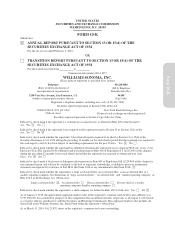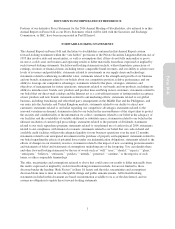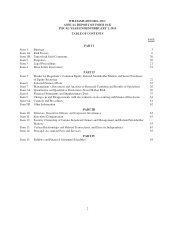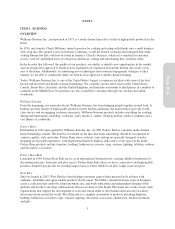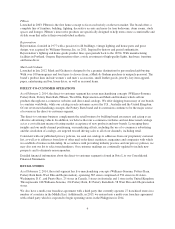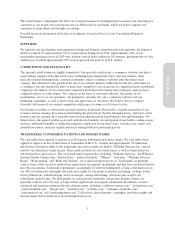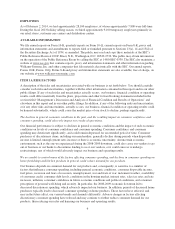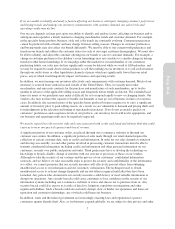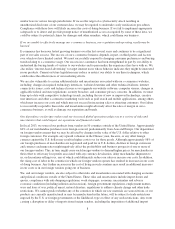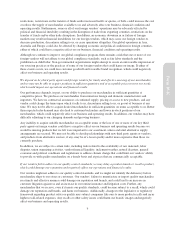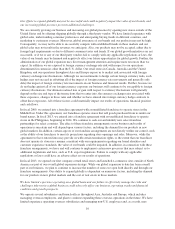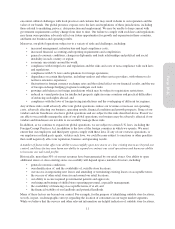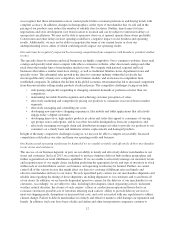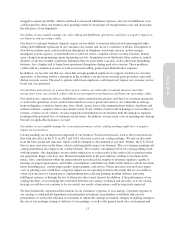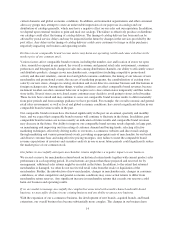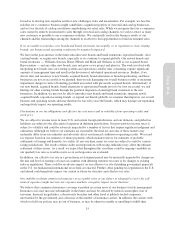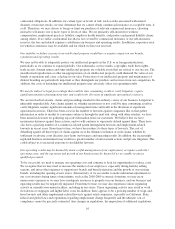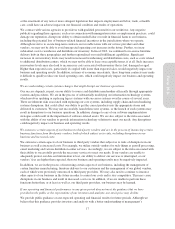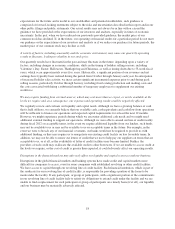Pottery Barn 2013 Annual Report Download - page 22
Download and view the complete annual report
Please find page 22 of the 2013 Pottery Barn annual report below. You can navigate through the pages in the report by either clicking on the pages listed below, or by using the keyword search tool below to find specific information within the annual report.similar laws in various foreign jurisdictions. If we are the target of a cybersecurity attack resulting in
unauthorized disclosure of our customer data, we may be required to undertake costly notification procedures.
Compliance with these laws will likely increase the costs of doing business. If we fail to implement appropriate
safeguards or to detect and provide prompt notice of unauthorized access as required by some of these laws, we
could be subject to potential claims for damages and other remedies, which could harm our business.
If we are unable to effectively manage our e-commerce business, our reputation and operating results may be
harmed.
E-commerce has been our fastest growing business over the last several years and continues to be a significant
part of our sales success. The success of our e-commerce business depends, in part, on third parties and factors
over which we have limited control. We must successfully respond to changing consumer preferences and buying
trends relating to e-commerce usage. Our success in e-commerce has been strengthened in part by our ability to
understand the buying trends of visitors to our websites and to personalize the experience they have with us. We
also utilize “interest-based advertising” to target internet users whose behavior indicates they might be interested
in our products. Current or future legislation may reduce or restrict our ability to use these techniques, which
could reduce the effectiveness of our marketing efforts.
We are also vulnerable to certain additional risks and uncertainties associated with our e-commerce websites,
including: changes in required technology interfaces; website downtime and other technical failures; internet
connectivity issues; costs and technical issues as we upgrade our website software; computer viruses; changes in
applicable federal and state regulations; security breaches; and consumer privacy concerns. In addition, we must
keep up to date with competitive technology trends, including the use of new or improved technology, creative
user interfaces and other e-commerce marketing tools such as paid search and mobile applications, among others,
which may increase our costs and which may not succeed in increasing sales or attracting customers. Our failure
to successfully respond to these risks and uncertainties might adversely affect the sales or margin in our e-
commerce business, as well as damage our reputation and brands.
Our dependence on foreign vendors and our increased global operations subject us to a variety of risks and
uncertainties that could impact our operations and financial results.
In fiscal 2013, we sourced our products from vendors in 50 countries outside of the United States. Approximately
64% of our merchandise purchases were foreign-sourced, predominantly from Asia and Europe. Our dependence
on foreign vendors means that we may be affected by changes in the value of the U.S. dollar relative to other
foreign currencies. For example, any upward valuation in the Chinese yuan, the euro, or any other foreign
currency against the U.S. dollar may result in higher costs to us for those goods. Although approximately 98% of
our foreign purchases of merchandise are negotiated and paid for in U.S. dollars, declines in foreign currencies
and currency exchange rates might negatively affect the profitability and business prospects of one or more of
our foreign vendors. This, in turn, might cause such foreign vendors to demand higher prices for merchandise in
their effort to offset any lost profits associated with any currency devaluation, delay merchandise shipments to
us, or discontinue selling to us, any of which could ultimately reduce our sales or increase our costs. In addition,
the rising cost of labor in the countries in which our foreign vendors operate has resulted in increases in our costs
of doing business. Any further increases in the cost of living in such countries may result in additional increases
in our costs or in our foreign vendors going out of business.
We, and our foreign vendors, are also subject to other risks and uncertainties associated with changing economic
and political conditions outside of the United States. These risks and uncertainties include import duties and
quotas, compliance with anti-dumping regulations, work stoppages, economic uncertainties and adverse
economic conditions (including inflation and recession), foreign government regulations, employment matters,
wars and fears of war, political unrest, natural disasters, regulations to address climate change and other trade
restrictions. We cannot predict whether any of the countries in which our raw materials are sourced from, or our
products are currently manufactured or may be manufactured in the future, will be subject to trade restrictions
imposed by the U.S. or foreign governments or the likelihood, type or effect of any such restrictions. Any event
causing a disruption or delay of imports from foreign vendors, including the imposition of additional import
8



